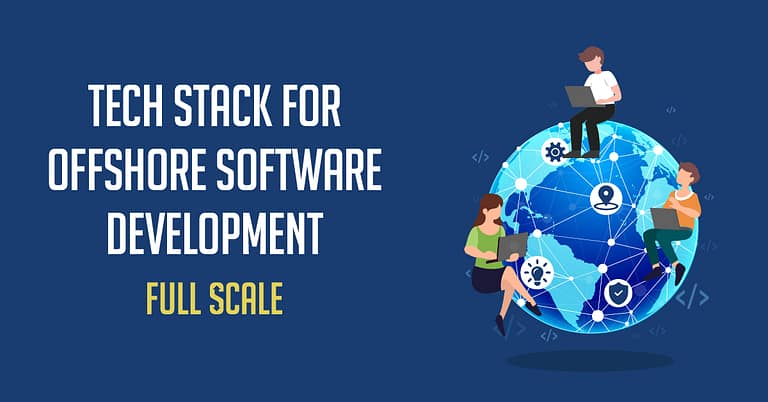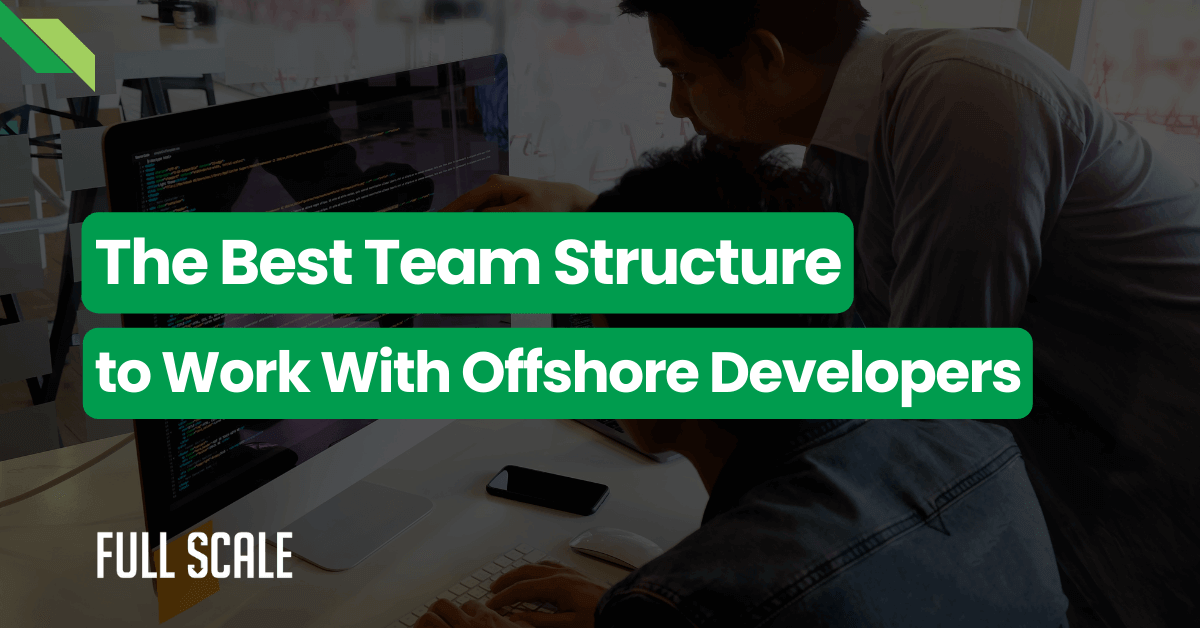Last Updated on 2024-10-11
Are you facing the challenge of choosing a tech stack for offshore software development? You’re in luck! We curated this guide to help you pick the best tech stack for your offshore development team.
Choosing the right tools and technologies in software development determines a project’s success. Some teams may use tools that don’t seamlessly integrate with each other. And sometimes, teams don’t often have the right guidance or knowledge with tech stacks.
Worry less! This guide will help you choose the best tech stack for offshore software development teams. Let’s start.
A Refresher on Tech Stacks
Before delving into the complexities of choosing the right tech stack for offshore software development, let’s take a moment to understand what a tech stack is.
In software development, a technology stack refers to the combination of technologies, tools, and software needed to complete an application. This combination includes programming languages, frameworks, libraries, tools, and software products developers use to create web or mobile applications.
While there are minute differences between tech stacks for remote and onsite teams, it’s still important to delicately tailor the best combination for your project. A well-chosen tech stack for offshore software development can significantly impact the project’s efficiency, scalability, and overall success.
Tips for Choosing the Right Tech Stack for Offshore Software Development
Choosing the appropriate tech stack for offshore software development is crucial for the success of any software development project. Here are seven essential tips you should consider:
1. Understand Your Project Requirements
The very foundation of any software project is a solid understanding of its requirements, scope, and limitations. You need to analyze the specific needs of your project to pick the best tech stack for offshore software development. These include functionality, scalability, security, and budget constraints.
It’s also important to acknowledge that different projects require different tech stacks. You can start by comprehensively examining your project’s objectives, functionalities, and long-term goals.
What type of application are you trying to make? Is it a data-intensive application, a real-time messaging service, or a shopping platform? Each type of project might require a different combination of stacks. For example, applications that have real-time updates may require technologies like WebSockets.
2. Consider and Plan for Future Scalability
When your software project becomes successful, the only way to go is up. This means that you will have to accommodate a growing user base.
For your tech stack for offshore software development, you can opt for technologies that can easily scale with your anticipated growth. In this case, scalability is paramount.
Choose technologies that can handle increased loads without compromising performance. To build scalable applications, you can look at distributed systems, microservices architectures, and serverless computing. In addition, consider caching mechanisms, load balancing, and database optimization best practices that help enhance performance.
Scalability ensures your application can handle increased traffic and data without compromising performance.
3. Evaluate the Expertise of Your Developers
Another factor to consider in choosing your tech stack for offshore software development is your team’s expertise. Assess the proficiency of your developers when curating a combination of stacks you will use.
You can opt for stacks that align with their expertise to ensure efficient development and troubleshooting. Or, you may also bargain a little learning curve that fits the project better if your developers don’t have much experience with your chosen tech.
Ultimately, choosing the technologies that are familiar to your team can streamline the development process and minimize errors. If your team excels in JavaScript, frameworks like Node.js for the backend and React.js for the frontend might be favorable choices.
If you don’t have a team yet, Full Scale can help you assemble experts based on what your project needs. Check out our Hire Developers page to get started.
4. Look for Community Support and Documentation
A robust community gains you access to extensive knowledge bases, tutorials, and support forums, making problem-solving more accessible. This is extremely helpful when choosing a tech stack for offshore software development.
Before finalizing your choice of a specific technology, you need to research its user base. Opt for technologies with active and vibrant communities. A strong community indicates continuous development, frequent updates, extensive documentation, and collaboration.
Developers can access forums, blogs, and open-source contributions, facilitating faster issue resolution and knowledge sharing.
5. Prioritize Security and Compliance
As exciting as technology is, it also threatens data privacy and security. In choosing a tech stack for your offshore development team, always prioritize security features and compliance requirements.
Security breaches can be catastrophic. So, ensure the selected stack has robust security protocols and adheres to industry standards and regulations, especially when dealing with sensitive data. Look for features like file encryption, authentication mechanisms, and secure coding practices.
Additionally, look for technology stacks that comply with industry regulations (such as GDPR for data protection in Europe or HIPAA for healthcare applications in the United States). While at it, perform regular security audits and updates to facilitate a robust security posture.
6. Incorporate Your Budget and Cost Considerations
Adopting the latest cutting-edge technologies can be very tempting, especially if it’s a worthy investment. However, you need to consider the financial implications of your chosen tech stack for offshore software development.
Start by evaluating the licensing costs, infrastructure requirements, and development time associated with the tech stack. Then, you can balance the features and benefits with the overall project budget. You can also look at open-source technologies, which are cost-effective options that don’t compromise quality. Evaluate the total cost of ownership and factor in initial development, maintenance, and upgrades.
Ultimately, if it burns your cash more than it gains you revenue, it’s not worth choosing.
7. Assess the Flexibility and Future-Proofing Properties
In this age, technology evolves rapidly. The best tech tack for offshore software development teams is one that allows for flexibility and future adaptations.
You might want to avoid overly specialized or proprietary technologies that will highly likely become obsolete quickly. Embrace modular architectures, microservices, and API-oriented system designs. Technologies that support containerization and orchestration are valuable for future-proofing and manageability.
The Top Tech Stack for Offshore Software Development Teams
By carefully considering the abovementioned factors and collaborating closely with your development team, you can select a tech stack that aligns with your project’s vision. When you have chosen the tech stack for your team, you can enhance efficiency and set the stage for a successful offshore software development endeavor.
But is there a superior tech stack for offshore software development teams? The answer is NONE. It will all depend on what your project needs and what your team can bring to the table. So, pick a lesson or two in this list when you’re designing the tech stack for your software project. Remember, the right tech stack isn’t just about the present; it’s an investment in the future of your application.
Hire an Offshore Software Development Team Today
Offshore software development vendors can significantly assist you in finding the right tech stacks for your project. They have diverse expertise, wide market reach, and cost-effectiveness that your company needs!
At Full Scale, we provide top-notch offshore software development to our global clients. Our client dashboard streamlines the recruitment process by matching clients with the needed talent. Each of our talented offshore professionals has undergone assessment and interview, so they’re ready to join your team!
Grow Your Tech with Full Scale Now!

Matt Watson is a serial tech entrepreneur who has started four companies and had a nine-figure exit. He was the founder and CTO of VinSolutions, the #1 CRM software used in today’s automotive industry. He has over twenty years of experience working as a tech CTO and building cutting-edge SaaS solutions.
As the CEO of Full Scale, he has helped over 100 tech companies build their software services and development teams. Full Scale specializes in helping tech companies grow by augmenting their in-house teams with software development talent from the Philippines.
Matt hosts Startup Hustle, a top podcast about entrepreneurship with over 6 million downloads. He has a wealth of knowledge about startups and business from his personal experience and from interviewing hundreds of other entrepreneurs.





